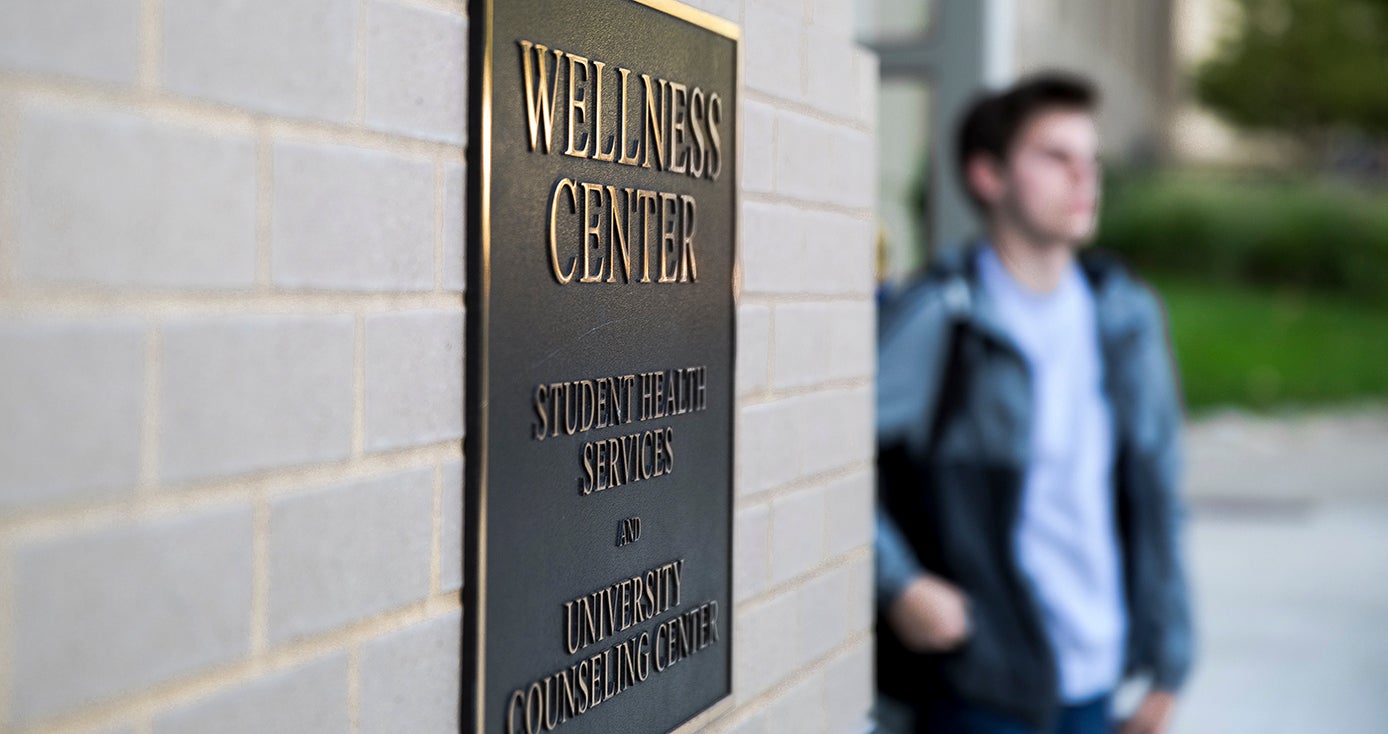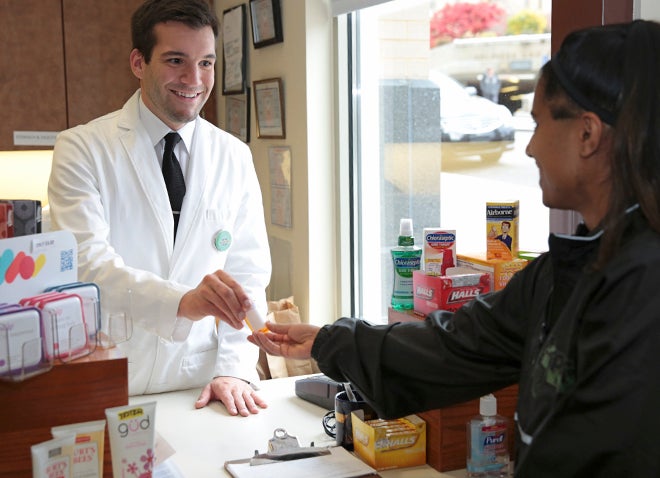
Subscribe to Pittwire Today
Get the most interesting and important stories from the University of Pittsburgh.Wellness Center Implementing a New Integrated, Holistic Health Care Service Delivery Model
The University of Pittsburgh is implementing a new integrated health care model that is designed to provide students with the services they need more efficiently and at a deeper, more holistic level.
The focus is not only on physical well-being, but also on mental and emotional health and how the three interconnect, according to Marian Vanek, interim director of the Wellness Center, which includes the Student Health Service and the University Counseling Center.
“There has been a revolution in the way health care is being viewed,” Vanek said. “Health care is now more patient-centered and comprehensive or holistic, and more and more colleges and universities are combining these services, because research has shown that when students are physically, mentally and emotionally well, they are more likely to thrive academically.”
The process of creating a unified on-campus health care model began a few years ago. As University architects and administrators conceptualized the design of Pitt’s newest residence hall in 2011, the opportunity to centralize campus health care facilities in one location became a reality: The Student Health Service — which Vanek directed for seven years before beginning her Wellness Center position in May — and the University Counseling Center came together under one Wellness Center roof, housed within Mark A. Nordenberg Hall, which opened in fall 2013.
“When the new Wellness Center opened, we accomplished one of our goals: bringing the two relatively independent operations together, along with the Pitt Pharmacy, so that doctors and health care professionals on the clinical side could collaborate more easily and seamlessly with counselors and psychiatrists working in mental health,” said Vice Provost and Dean of Students Kenyon Bonner.
Vanek agreed, saying “the move to the new Wellness Center definitely strengthened the working relationship between the two groups of professionals and certainly enhanced our service delivery.” She said plans included adding more staff and developing a new service model to deliver integrated, comprehensive and holistic services that emphasize a patient-centered approach.
According to the 2015 Center for Collegiate Mental Health Report, since 2010, the average level of counseling center utilization nationwide has increased by 30 percent, while average institutional enrollment has increased just 5 percent. This trend has required counseling centers to streamline their processes, and Pitt has done that during the past year. New patient intake procedures were established for students seeking mental health services in fall 2016, providing almost immediate, same-day access for walk-in clients seeking urgent care and evaluation. A new system also was put in place to manage after-hours emergencies 24 hours per day, seven days per week.
Six new counselor positions were added during this past year, bringing Pitt’s number of full-time staff equivalencies up to 21.5 and providing the University with a student-to-counselor ratio of 1:1,300, which is better than the national average of 1:1,600 and well within the guidelines recommended by the International Association of Counseling Centers. Pitt is also conducting a national search for a counseling center director, which includes forming a University search committee consisting of faculty, staff and students.
“During the past few months, we have created collaborative treatment teams with counselors, clinicians and care managers so that we can provide a more comprehensive, coordinated approach in treating our student population,” said Vanek. “By combining our resources and working together, we are able to make evaluations and develop treatment plans better than we could have independently.”
Four interdisciplinary wellness teams are now in place, including an eating disorders treatment team; a multicultural treatment team to manage care for specialized populations; a substance abuse treatment team; and a team of professionals who collaborate to meet the unique needs of transgender students. Vanek said that the groups already have held productive discussions about how they can more effectively serve Pitt’s student population of more than 18,000 undergraduates and 10,000 graduate and professional students. More groups will likely be added this fall. In addition, the Wellness Center expanded its ongoing array of group counseling options to enable more students to tap into a proven and effective manner in which to receive care.
With a new integrated service delivery model, along with continued support from the University and community providers, the staff in Pitt’s Wellness Center are better positioned to serve students so that they can continue to achieve in the classroom and thrive in their daily lives.
In addition to treatment benefits, Vanek also said the new integrated model includes plans to introduce more coordinated education and prevention programs, streamlined front desk functions and more unified communications and marketing strategies. She also added that other centers in colleges and universities around the country that have adopted this model have seen greater staff satisfaction.
The University also has entered into a formal partnership with The Jed Foundation, a national nonprofit organization that exists to protect emotional health and prevent suicide among teenagers and young adults. During a campus site visit in May with Pitt’s Mental Health Task Force, which includes both undergraduate and graduate student representation, Jed staff members recognized that Pitt was doing excellent work in many areas and offered suggestions including establishing peer-to-peer counseling programs.
Vanek said that a university student health center or counseling center serving such a large number of students cannot possibly provide intensive treatment and therapy that is already accessible through a community provider and usually covered under a student’s insurance.
“If a student comes to us with a serious physical or mental health condition that requires long-term care, oftentimes the best course of treatment is to refer the student to one of our community partners for long-term assistance,” she said. “That’s why we’re working hard to continue establishing and effectively utilizing community providers.”
Bonner added, “There is still room for improvement in our services, but we have worked hard the past couple of years to build an infrastructure to recruit and leverage the talent and expertise needed to help a large number of students in the best possible way.”
With a new integrated service delivery model, along with continued support from the University and community providers, the staff in Pitt’s Wellness Center are better positioned to serve students so that they can continue to achieve in the classroom and thrive in their daily lives.



